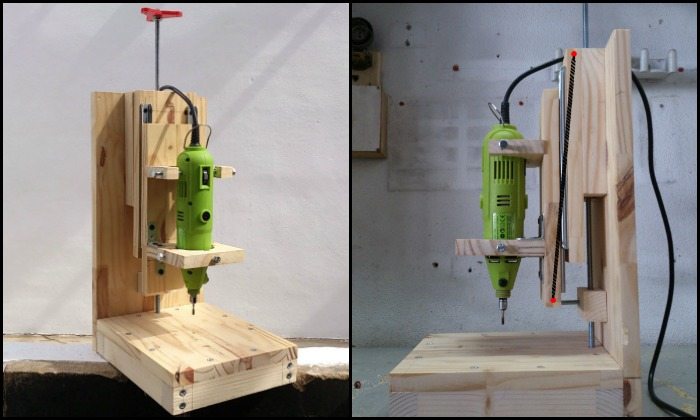
First I cut two 25cm long boards to my drill press for $20 (per 10mm wide), notice that I’m not throwing away any wood. After sanding the edges, I placed my set square at one edge. I do two marks, one at 10cm, and one at 90. I repeat the operation with the lower part of the board as well as with the other board.

TIPS:
- To do the markings on the drill press for $20 with the set square, use left edge of the small boards this edge comes perfectly straight, so errors and other problems when marking won’t be a problem.
Once finished, these lines must be parallel between each other of the drill press for $20. Now, with the set square I did a line 1.5 cm above the lowest edge, perpendicular to the other two. That line will help the guides of the drill press for $20 to be at the same height.
With the lines that define the position of the drill press for $20 guides I placed them so the longer lines passed through the middle of the holes. Then, with the pencil I marked the shape of those holes and drilled them out of the wood.
- Maybe this is useful or maybe I’m too paranoid, but I marked the drill press for $20 guides to know which goes where after marking the holes to drill. Theoretically they’re exact, but anyway, let’s not risk it… After the holes have been drilled, screw the guides to the small board.
IMPORTANT: Notice that my drill press for $20 guides have different sets of holes, on one side there are lots of them, but on the other one there are just a few. The side with just a few holes will be the side attached to the arm. This is because it’ll be easier to disassemble in case the guides get stuck, or to do any adjustment…
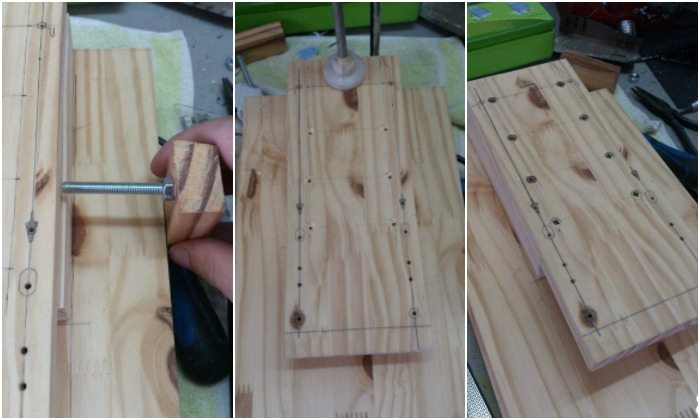
To screw the board to the spacers we need to follow a special procedure. This board must be perfectly parallel with respect to the big board. To do so I made a simple but effective tool to align the board. I slid it along the flat edge of the board and checked that the screw is always touching the small board. Once I was sure the board was aligned, I clamped it in place, drilled the holes, and without removing the clamp I inserted the screws.
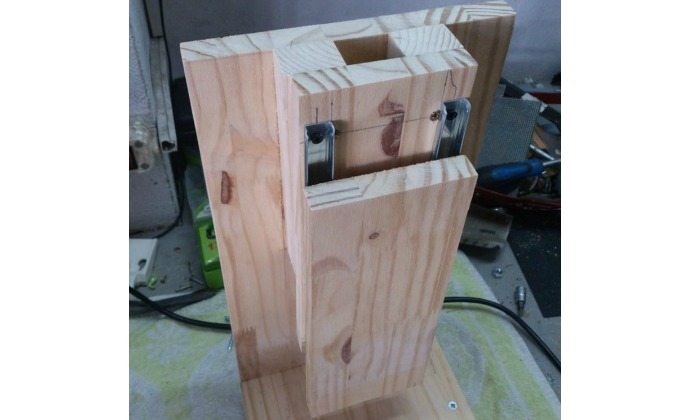
After this we just have to screw the guides in place.
IMPORTANT: While placing the screws, the board can change of position to accommodate the screws. To avoid this, place the screws with the clamp attached. That way the screws will have to get accommodated to the wood and not the other way around.
The union: This is also one of the most crucial operations. The guides are now aligned, but if we goof it when joining the board with the base we’ll end making holes with a certain deviation. Luckily, there are some tricks that makes this process easier.
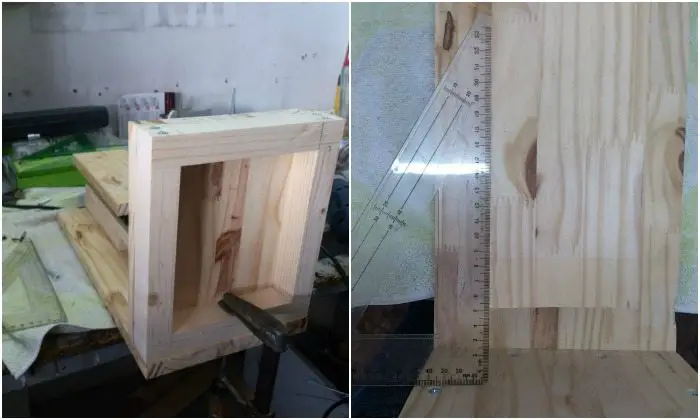
We first clamp the drill press for $20 base to the board by eye and make sure the edges are more or less aligned. Don’t apply too much pressure because we want it to have a certain degree of movement. Then, we place a carpenter’s square touching the base, the board must be parallel to the side touching it, and also, when we slide down the guide, the drill press for $20 board must remain at the same distance from the square. If it gets closer or further we must change the inclination of the base by tapping it gently at the bottom. The clamp will allow us to make and conserve those subtle adjustments.
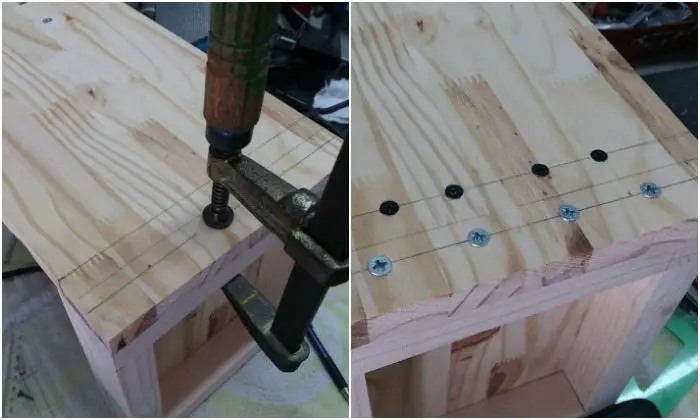
Once the base is aligned with the guides we clamp it strongly, and we mark the places where the screws will be attached, make sure you don’t get in the way of a previously placed screw. To make the lines I divided the length of the slat and board by two. That way I’m sure the screws will go through the middle of them. In my case I placed 4 long screws up (at the slat) and 4 short (at the board). This is just temporary.
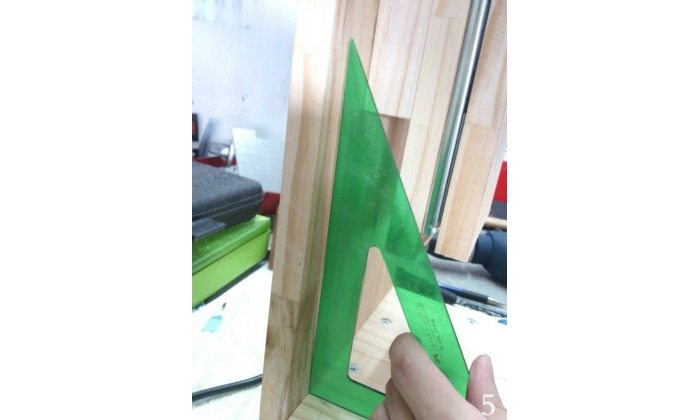
Now I’ve got a problem! And I guess some of you will have the same one. The board is misaligned with the base. This is not a serious problem and I kinda expected it. To solve this, I sand the upper part of the base, where the board is attached, so it forms a perfect 90º angle. It might take some tries but the hardest part is finished.
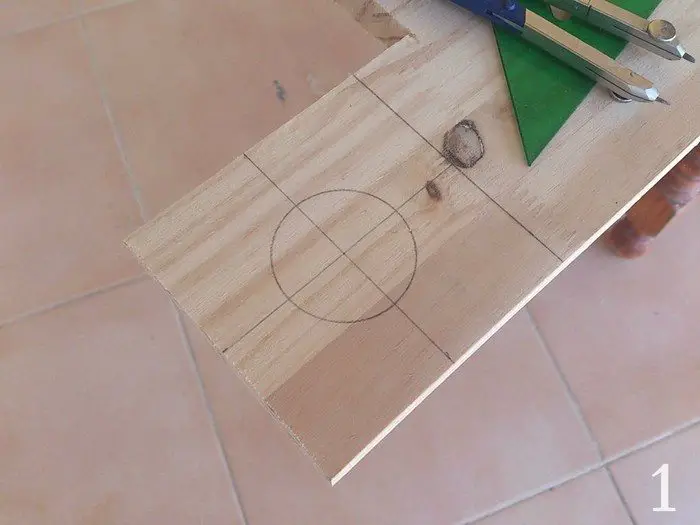
Adding the drill support: Now I must create a support for the drill press for $20. Since I might also use a high speed drill, I opted to use a general holder and some kind of screw to hold the tool in place regardless of its diameter. This part is kinda general, since some measurements might change due to the tool used.
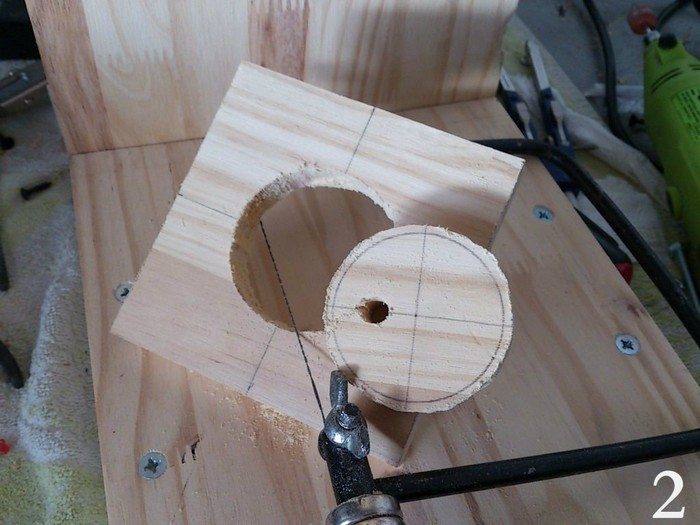
I cut the last piece of wood, then I made a hole though it. I’m not very proud of how that hole came out. A jeweler’s saw and thick wood don’t get along, but that’s easy to fix with sandpaper wrapped around a tube. The diameter of the hole is the diameter of the high speed drill since it’s the widest power tool I’ll be using to my drill press for $20.
The flat side (the side that hasn’t been cut) will be attached to the guide board. The other sides are sanded to remove the saw dents. I make a mark in the middle of each of them to make a hole for the screws to pass through.
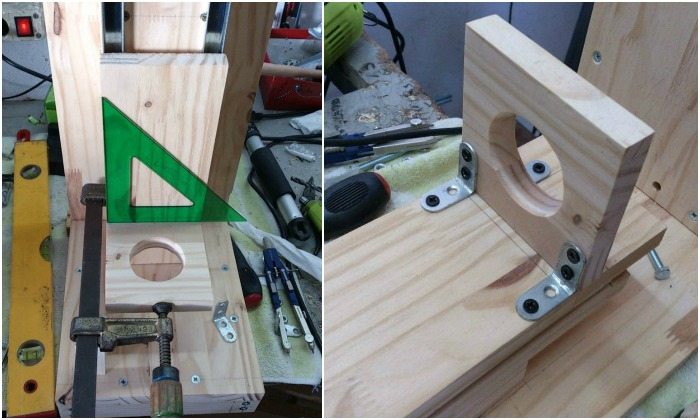
I checked the support and saw that it’s perfectly straight. I clamped it while I drilled the holes to install 90º brackets to hold the support in place. Then I inserted the screws. When everything fit correctly I unscrewed the thing to proceed with the next operation.
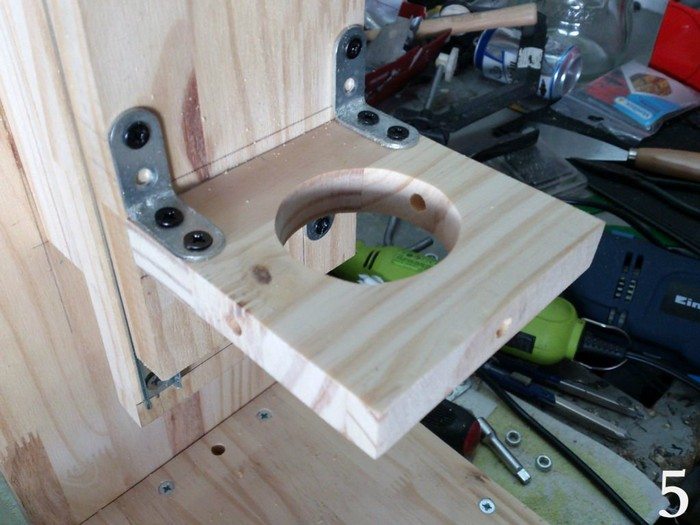
I marked a point at the middle of each side on my drill press for $20. Then with a 6mm wood bit, I drilled holes through them – the screws to hold the tools will go in there.
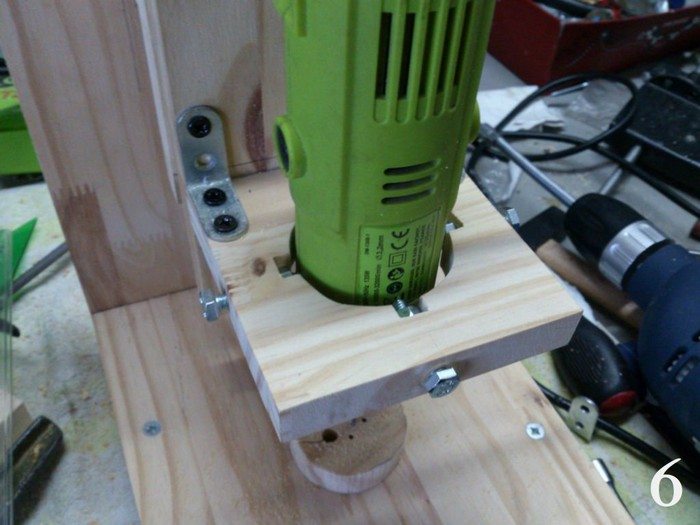
I carefully cut away a piece of wood equivalent to the size of an M6 screw nut on my drill press for $20. That will keep the nuts in place and will allow them to be attached without protruding and touching the tool.

I attached another support, this time a bit higher. I also use some screws to allow some margin when holding the tool.
Continued Page 3…

